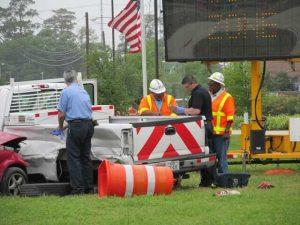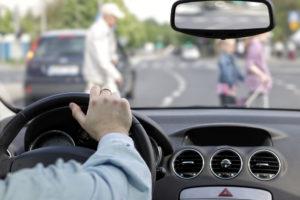
Pedestrian accidents are common in Arkansas, with an average of 25 pedestrians suffering preventable fatal injuries every year. Pedestrians encounter numerous risks when crossing the road, from drunk driving crashes to hit-and-run incidents. Generally, they are the most vulnerable on the road because they have no protection against surrounding cars.
The general assumption is that pedestrians enjoy the right of way at all times, but this isn’t always the situation. You can speak to an experienced attorney from Morris Bart’s law firm for further clarification into the elements of pedestrian accident claims.
Pedestrians don’t Always Enjoy the Right of Way
Drivers are always obliged to take due care and exercise caution to avoid hitting pedestrians, whether there’s a crosswalk or not. But they may still not be responsible for a pedestrian accident. So, pedestrians don’t entirely rule the road and must yield the right-of-way to motorists if they’re crossing a roadway outside an unmarked or marked crosswalk at an intersection.
Here are the main rules, as captured in Arkansas pedestrian laws:
- A pedestrian trying to cross a roadway without using a marked or unmarked crosswalk at an intersection owes other motorists the right of way.
- Every pedestrian trying to cross a roadway where an overhead pedestrian crossing or pedestrian tunnel is available must yield the right of way to motorists.
- Pedestrians aren’t allowed to cross between adjacent intersections with operational control signals, except if they use a marked crosswalk.
- Notwithstanding this section’s provisions, motorists must exercise due care to prevent collisions with pedestrians on any roadway. They must also warn when necessary by using their horns and exercise reasonable precaution upon realizing that a child or an incapacitated or confused person is using the road.
Based on the rules above, it’s clear that passengers don’t usually have the right of way. So, when filing a personal injury claim after an accident, the plaintiff must prove that they were exercising caution and paying attention to the relevant traffic laws.
For a free legal consultation, call 800-537-8185
When Is the Driver Considered to Be at Fault After an Accident?
Most people usually assume that the driver will always be liable for a pedestrian accident, but this isn’t always the case, as you’ve already realized. Instead, the motorist could be responsible for the resulting damages if they were speeding or violated relevant road safety rules.
The driver will be in trouble if they:
- Didn’t keep proper distance behind other motorists
- Failed to make complete stops at red lights or stop signs
- Didn’t use turn signals correctly
- Exceeded the speed limits
- Operated the vehicle while distracted, like by sending a text
- Rolled the red light
- Failed to look both ways
A pedestrian accident victim can sue a motorist on the grounds of negligence or recklessness. A plaintiff must prove that the responsible party understood the risks of their actions, but they still ignored safety.
When Is the Pedestrian at Fault?
Not all accidents result from drivers’ actions. Sometimes, the pedestrian could be at fault if they act in a way that the driver couldn’t do much to avoid hitting them. A pedestrian is considered at fault under the following circumstances:
- They were inattentive as they stepped off the curb.
- A child was running after a ball in the street.
- The victim quickly jumped out onto the roadway.
The victim’s actions right before the accident will determine whether they share the blame or not. So be sure to consult with a pedestrian accident lawyer if you believe you have a valid personal injury claim.
Click to contact our personal injury lawyers today
Legal Remedies for a Pedestrian Accident Claim
If you’ve suffered injuries and property damage after an accident, you’re entitled to fair compensation from the one who contributed to or caused the unfortunate incident. This compensation is referred to as damages. You may receive compensatory and punitive damages if you prove negligence on the other party’s part.
These are awarded to cover the defendant’s direct losses resulting from the accident. They’re generally based on the value of the harm and costs incurred due to the incident. Compensatory damages are further classified into these categories.
Special Compensatory Damages
These cover all the monetary costs resulting from an injury and are meant to restore the victim’s financial position after spending or losing money due to the accident. Examples include:
- Medical costs
- Lost income
- Lost future earnings
- Cost of future healthcare services
- Household expenses
- The cost of altered plans and canceled trips
General Compensatory Damages
These usually compensate the accident victim for non-monetary damages relevant to their injury claim. The most common examples include:
- Pain and suffering
- The inflicted injuries
- Mental anguish
- Lost opportunities
- Loss of companionship or consortium
Punitive Damages
Injured plaintiffs may also get punitive damages if the defendant’s wrongful act was reprehensible or despicable. A typical example occurs when the defendant is found guilty of malicious acts or fraud. The court might include these damages if the at-fault driver demonstrated extreme negligence.
What Must You Prove to Get Compensation from a Pedestrian Accident?
You must have sufficient proof to convince the judge to award you damages like in any other case. You need to properly comprehend the local laws and be experienced with pedestrian accident claims to pursue compensation successfully. Generally, you must prove the following:
- Duty of care – You must present evidence to prove that the driver owed you a duty of care and must have avoided distractions or stayed sober.
- Breach of duty – It’s critical to show how the driver failed to act responsibly, and this caused the accident.
- Causation – The court must see a vivid relationship between the driver’s behavior on the road, the accident, and your injuries.
The most critical pieces of evidence must be collected immediately after the crash. Understandably, this can be difficult, especially if you’re nursing injuries. But you’ll have a more effortless experience if you involve a qualified Arkansas pedestrian injury attorney.
An Experienced Pedestrian Accident Attorney Is Ready to Help
Pedestrian accident claims can get complicated. Besides the different regulations and the difficulty of proving negligence, you’ll also have trouble negotiating fair compensation.
Fortunately, experienced pedestrian accident lawyers at Morris Bart’s law firm are ready to evaluate your case for free and guide you accordingly at a contingency-based fee. Reach us today.
Questions?Call 800-537-8185
to find a Morris Bart office near you.





